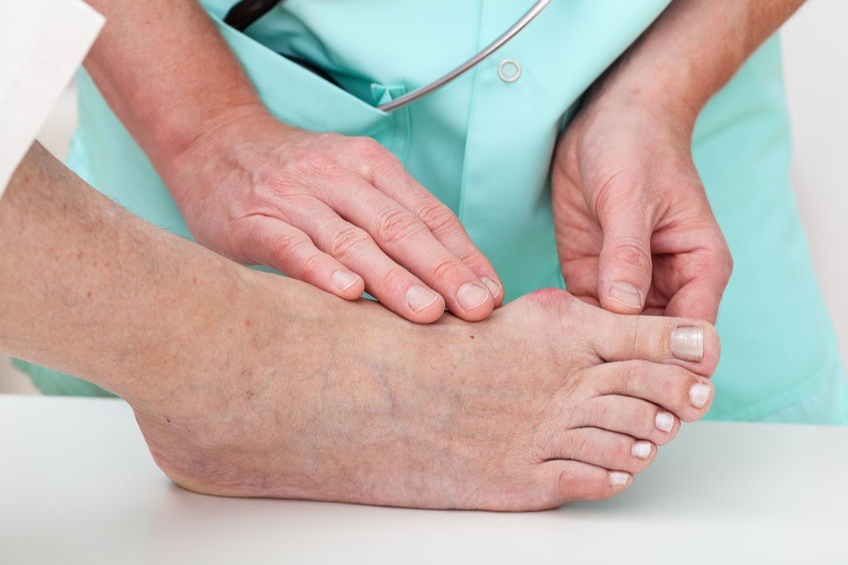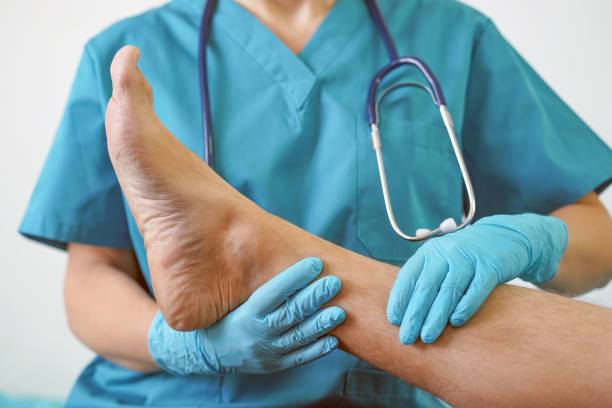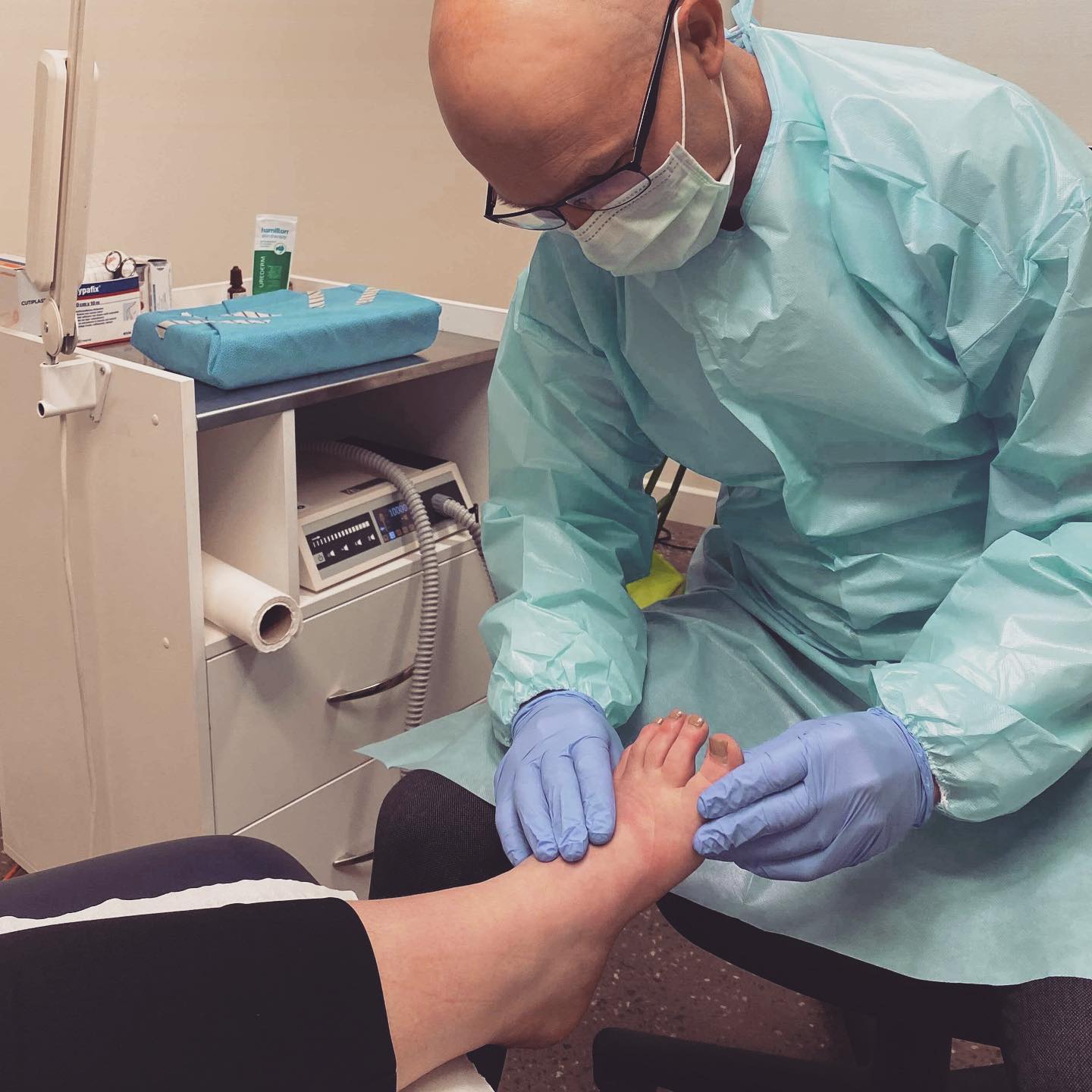Preventing Bunions: Strategies for Avoiding the Development of Foot Deformities
Bunions are a common foot deformity that affects many individuals. It is characterized by a bony bump that forms on the base of the big toe, causing the joint to shift out of place. This can lead to pain, discomfort, and difficulty wearing certain shoes. While some people may be genetically predisposed to developing bunions, certain strategies can help prevent them from forming. In this article, we will discuss some of the best ways to preventing bunions and maintain healthy feet.
A Guide to Bunions: What You Need to Know
Bunions, scientifically referred to as hallux valgus, result from undue stress on the joint located at the base of the big toe. This condition forces the big toe to angle towards the second toe instead of maintaining a straightforward direction. Over a period, this abnormal positioning leads to a transformation in the bone’s structure, creating a noticeable bump on the foot’s side. Although tight, narrow footwear or high heels are common culprits, factors like genetics and the intrinsic structure of the foot significantly contribute to bunion formation. Recognizing the fundamental causes and early symptoms of bunions is essential for proactive prevention and timely treatment.

Guide to Bunion
Selecting Ideal Footwear for Healthy Feet
Choosing the right shoes is essential for bunion prevention and maintaining good foot health. Footwear that offers enough room for toe movement can alleviate the pressure on the joint of the big toe, lowering the chance of bunion development. It’s advisable to pick shoes that have a broad front section, giving your toes the freedom to spread out naturally without squeezing them together. Furthermore, shoes that come with proper arch support are beneficial as they ensure the feet are well-aligned, reducing unnecessary strain on the joints. Wearing high heels frequently is not recommended because they tilt the foot forward, squeezing the toes into a cramped space. For daily wear, footwear with a heel height not exceeding two inches is ideal. Alternating between different pairs of shoes to avoid repeated stress on specific areas of the foot can also aid in preventing bunions.
Promoting Foot Health through Weight Management
The key to preventing bunions and reducing foot strain lies in maintaining a proper weight. When you carry excess weight, it puts additional pressure on your feet with each step, especially affecting the forefoot and the big toe joints. Keeping your weight in a healthy range helps to lessen this stress, minimizing the chance of developing bunions. A combination of regular exercise and a well-balanced diet not only aids in managing your weight but also promotes overall foot wellness. Incorporating exercises tailored to the feet can strengthen muscles, enhance flexibility, and support your joints, offering further protection against bunions.
Enhanced Foot Health through Exercise
Incorporating daily foot exercises into your wellness routine plays a pivotal role in bunion prevention and overall foot health enhancement. Targeted exercises that fortify foot strength contribute to maintaining the correct positioning of the toes, thereby improving the structural stability of the feet. Engaging in straightforward activities such as performing toe clenches, spreading the toes apart, and creating a ‘dome’ shape with the foot muscles not only bolsters the strength of the intrinsic muscles of the foot but also increases the mobility of the toe joints. A practical exercise, like using your toes to grasp items, can substantially boost muscular power. Furthermore, the “heel raise” exercise, which involves elevating your heels while standing on tiptoes, is instrumental in reinforcing the muscles surrounding the big toe and the foot’s arch. Regular dedication to these exercises can fortify foot endurance, aiding in the prevention of bunions and mitigating risks of other foot ailments.

Bunions Treatment
Orthotic Solutions and Cushioning Pads
In addition to the strategies previously mentioned, employing orthotic solutions and cushioning pads is immensely beneficial for both the prevention of bunions and the reduction of discomfort for those who are already experiencing them. Customized orthotics are crafted to conform to the unique shape of your feet, ensuring an even distribution of pressure throughout the foot. This helps to avoid the excessive stress that can lead to the development of bunions. By maintaining the foot in proper alignment, these orthotics play a vital role in reducing strain on the joint of the big toe. For added defense, especially during activities that increase foot pressure, cushioning pads can be used. These pads are applied directly to the bunion area, mitigating friction and pressure exerted by shoes, and offering prompt pain relief. Incorporating both orthotic solutions and cushioning pads is essential for a holistic foot health strategy, aiding not only in bunion prevention but also in promoting overall comfort for the feet.
Proactive Management of Bunions: The Importance of Early Attention
Managing bunions effectively hinges on early recognition and appropriate responses to mitigate their effects on daily life. If you observe early indicators such as consistent discomfort in the foot, a noticeable bump by the big toe, or foot shape alterations, consulting a medical expert is advised. Early efforts can markedly influence the progression of bunions, offering a possibility to reduce or evade surgical interventions. Conducting frequent checks on your feet, staying vigilant about any pain or unease during movement, and noting any changes in how your shoes fit are key strategies for early bunion detection. Implementing breaks to elevate your feet throughout the day can lessen symptoms, while participating in soft stretching routines for your toes and feet can improve their flexibility and decrease stress. Taking initiative in caring for your feet not only helps manage bunion-related issues but also supports an ongoing, active way of life.
Professional Foot Assessments: A Key to Preventative Care
Professional foot assessments by podiatrists or foot care specialists are instrumental in not only identifying the early stages of bunions but also in crafting tailored strategies to prevent their progression. These assessments provide a comprehensive examination of foot structure, gait analysis, and identifying any abnormalities in foot function. Specialists can offer insights into the specific type of footwear that would best support your feet, taking into account individual needs such as arch height and walking style. Additionally, they can prescribe custom orthotics designed to correct misalignments and distribute pressure evenly across the foot, thereby reducing the risk of bunion formation. Regular appointments for foot assessments ensure ongoing monitoring of foot health, making it easier to make adjustments in preventive care as required. By working with a professional, combined with proactive measures of self-care and maintenance, you are sure to have happy feet for years to come. So instead of waiting for problems to arise, it is always better to be proactive and seek professional guidance early on for maintaining optimal foot health.

Professional Bunions Treatment
Managing Bunion Discomfort Through Activity Modification
To alleviate bunion pain and prevent further misalignment, it’s key to recognize and adjust activities that can worsen the condition. Engaging in high-impact sports, such as running or participating in aerobic exercises, places significant strain on the foot, thus, aggravating bunion issues. Extended periods of standing also increase toe pressure, leading to enhanced discomfort and exacerbating bunions’ physical impact. Shifting to low-impact exercises like swimming or biking is advisable, offering heart-health benefits while reducing foot stress. Factoring in breaks throughout the day and elevating the feet whenever possible are effective strategies to lessen the impact of strenuous activities. Paying attention to bodily cues and selecting shoes that offer proper support and ample toe room are essential steps towards managing bunion discomfort efficiently.
Surgical Considerations for Advanced Bunion Cases
For individuals with advanced bunion cases that do not respond well to non-surgical interventions, surgical options might become necessary. The decision to proceed with surgery is significant and should involve a thorough consultation with a foot and ankle surgeon to understand the risks, benefits, and expected recovery process. The goal of bunion surgery, technically known as a bunionectomy, is to realign the bones, ligaments, tendons, and nerves so that the big toe can be brought back to its correct position. There are various surgical procedures available, depending on the severity and the specific anatomy of the patient’s foot. Recovery time can vary, often involving several weeks of reduced activity to allow for proper healing. Post-surgical care is crucial and may include physical therapy exercises to restore strength and flexibility to the foot. While surgery can provide relief from pain and improve foot function, it is considered a last resort after all other conservative treatments have been explored.
Bunion management and prevention encompass a wide array of strategies, from the utilization of orthotic devices and cushioning pads to professional foot assessments and lifestyle adjustments. Each method plays a crucial role in not only providing relief from the discomfort associated with bunions but also in preventing their formation or worsening. Whether through proactive management techniques or considering surgical interventions for advanced cases, it is imperative for individuals to pay close attention to their foot health. Early detection and appropriate response are key to minimizing the impact of bunions on one’s quality of life. By adopting a comprehensive approach towards foot care, individuals can continue to enjoy an active, pain-free lifestyle while mitigating the risks associated with bunions.
Flagstaff Foot Doctors: Anthony Rosales DPM
https://www.google.com/maps?cid=8835841318590452161
421 N Humphreys St, Flagstaff, AZ 86001, United States
(928) 774-4825
https://flagstafffootandankle.com/
